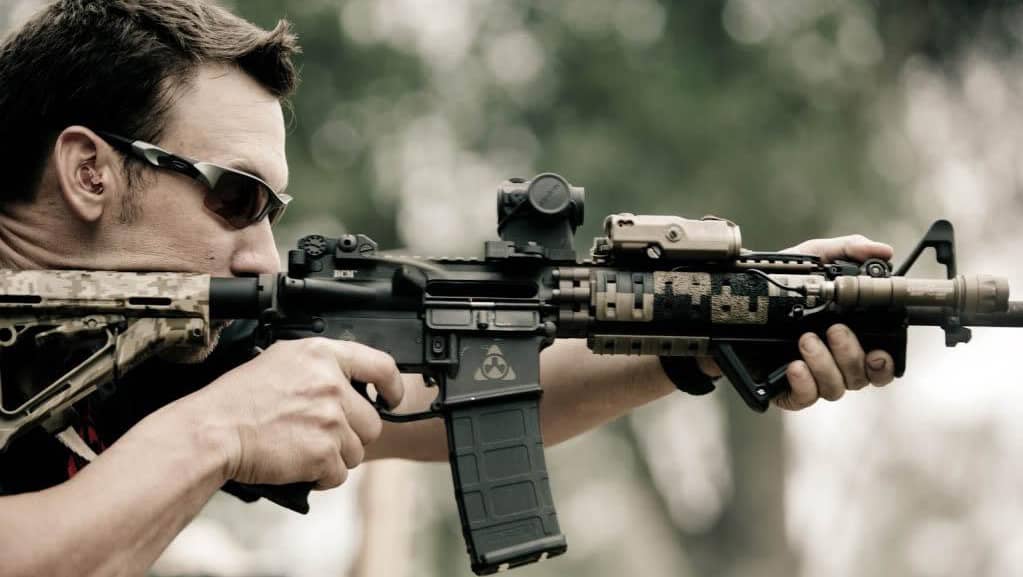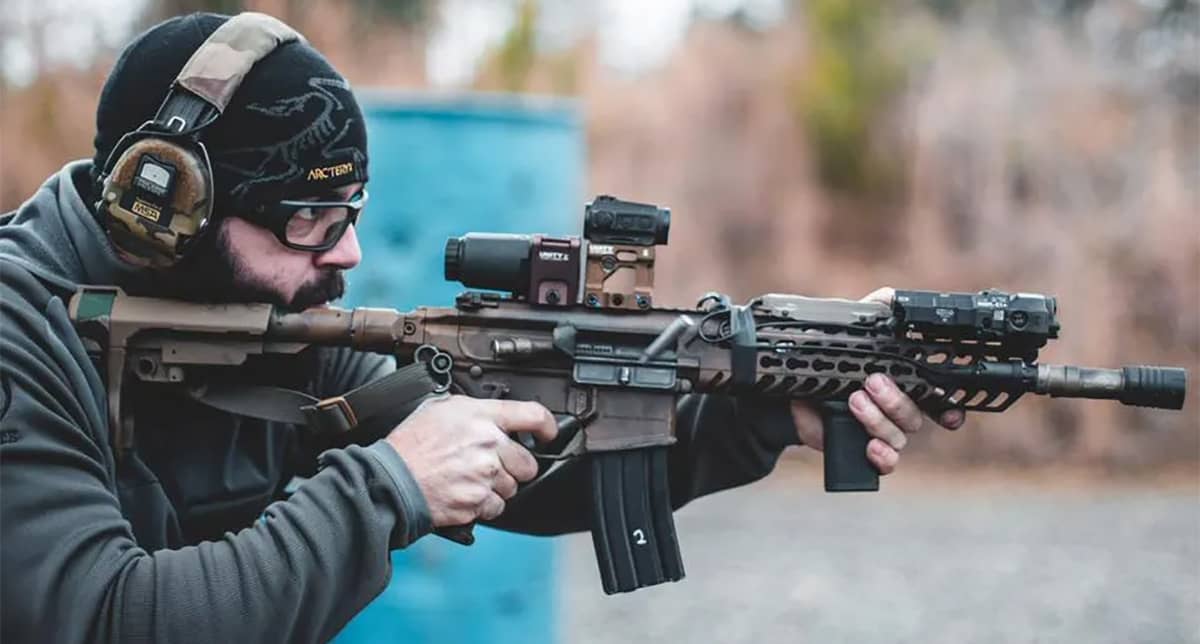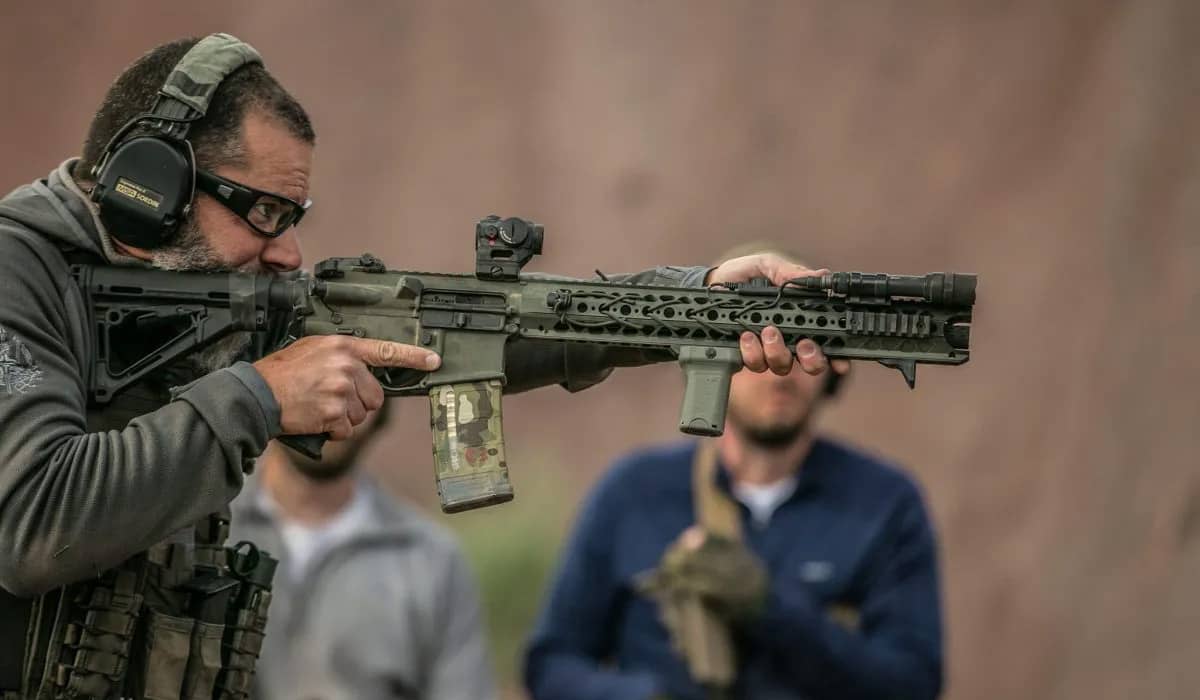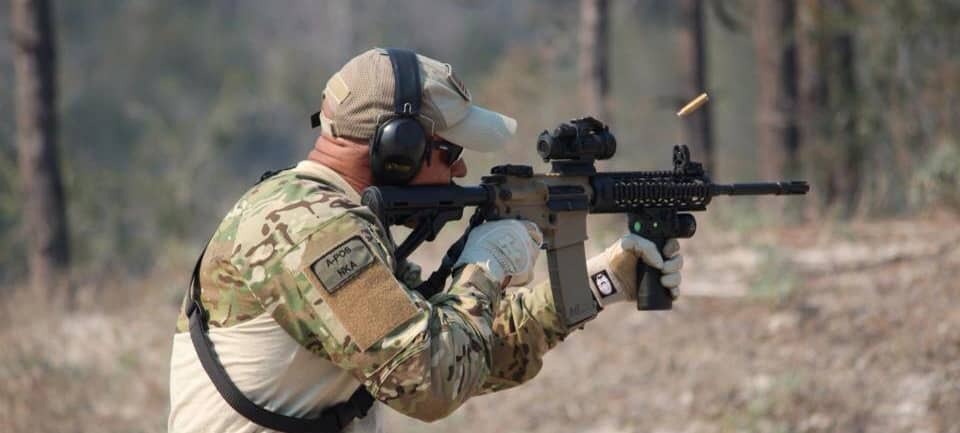
The AR-15 design was converted from military to civilian operations by removing the select fire option from the rifle. While many of the available AR accessories are designed to make the platform look more like a military weapon, most AR accessories are designed to increase the firearm's function, and one of the most useful accessories is the fore grip.
There are various methods of gripping an AR rifle when firing. While some prefer to take a minimalist approach, many shooters like the idea of adding a fore grip for added stability. However, most shooters do not realize the fore grip can also help to significantly reduced perceived recoil when used properly.
There are essentially two types of fore grips, referred to as "vertical" and "angled." Both types of fore grips mount to the underside of the platform with the vertical fore grip running perpendicular to the rifle and the angled models slanting backward, towards the shooter, at somewhere around a 45-degree angle. It is important to note that vertical model fore grips are not compatible with all folding type stocks.
Table of Contents
- Grip Techniques for Vertical Grips
- "Thumb-Break Position"
- "C-Clamp Grip"
- "Broomstick"
- Vertical Grip Alternative: Angled Fore Grip
- Additional Tips
Grip Techniques for Vertical Grips
While grip technique is somewhat subjective, meaning what works for one shooter may not work for another, some basics should be kept in mind to increase speed and mobility while maintaining accuracy. Individual shooters may need to adjust their technique when firing from cover or when on the move while still keeping basic shooting techniques in mind.
To obtain and maintain maximum control over the muzzle, it is imperative that you allow your intuition to guide you. Proprioception, or kinesthesia, is your body's ability to sense position, actions, and movement. To this end, a vertical fore grip should be positioned as far forward as is comfortable to keep your support arm in line with the barrel as much as possible. This allows for a more intuitive barrel swing and faster target acquisition.

"Thumb-Break Position"
The thumb-break grip significantly improves muzzle control, and most shooters will lean towards the thumb-break position after some practice and trial and error. The thumb-break position places the four fingers of the support hand on the fore grip with the thumb placed firmly against the hand guard. This position provides you with the most leverage and increases stability in both the vertical and horizontal planes.

"C-Clamp Grip"
The C-clamp grip involves wrapping the four fingers of the support hand on the right side of the hand guard for right-handed shooters and on the left side for left-handed shooters with the thumb on the opposite side of the hand guard at the 11- and 1-O'clock positions, respectively. While this grip can be used without a fore grip, using the C-clamp grip in conjunction with a fore grip will reduce perceived recoil and muzzle jump by applying backward pressure to help keep the stock anchored firmly against your shoulder. Note that using the C-clamp grip will require moving the fore grip slightly backwards.

Holding it vertically "Broomstick"
Vertical fore grips extend straight down from the barrel and have been nicknamed "broomstick" grips. These allow you more control of the fore end of the rifle and are well suited to shooters who want maximum control, especially in rapid-fire situations where the barrel tends to get too hot to hold onto.
The natural tendency is to grip the vertical fore grip like a baseball bat, wrapping your fingers around the grip. However, this will generally cause you to pull the rifle to your support-hand side and result in misses to that side.
Vertical Grip Alternative: Angled Fore Grip
Many shooters prefer angled fore grips as these are more ergonomically friendly and prevent the listing that comes from improperly holding the broomstick fore grip. The angled fore grip also allow you to place your hand closer to the rail, resulting in a more natural stance and shouldering position by reducing the tension on your hand. This helps to combat muzzle climb, improve fluidity and increase accuracy. The proper method for using an angled fore grip is to wrap your support hand around the angled fore grip and pull the rifle straight back into your shoulder.
Additional Tips for Improved Grip
Always remember that every shooter is different, and you will need to experiment until you figure out which grip method gives you the most consistent accuracy.
Grip Farther Out
For those who use the thumb-break grip method, which tends to be less aggressive than the C-clamp grip method, the vertical fore grip provides a solid stop for the support hand to pull back against. This technique is very effective when moving quickly between targets at close range. However, the grip must typically be positioned further out towards the end of the rifle in order for the thumb-break grip to be the most effective.
Grip Higher Up
Placing your hand higher up on the fore handguard places the center of your hand closer to the line of the bore. This will usually offer better spatial awareness and allow you to exert downward pressure on the rifle's fore end that will help control muzzle climb.
Use Proper Body Posture
Irrelevant of the grip you choose, keep these four things in mind to maintain the correct shooting posture:
- Focus on keeping your knees slightly bent and your center mass over the balls of your feet, such as when preparing to jump.
- Lean forward at the waist to keep your body stable.
- Don't lock the elbow of your support arm as this allows your elbow to flex and help absorb recoil.
- Place enough backwards pressure on the fore grip to keep the stock pressed firmly against your shoulder while firing.
Keep these tips in mind while practicing with various grip methods. Concentrate on consistency, and you will see a marked improvement in your shooting accuracy.
Looking For a New Foregrip? Look No Further Than Wing Tactical!
Wing Tactical is a veteran-owned company and your online source for any foregrip you may need for your AR-15. We also shoot, and we can help you choose all the right parts based on your weapon type, your performance goals and how you want your build to look. Ready to get started? Send us an email and let us know what you have in mind.